Overview of ‘Fireworks’ Goldenrod
Many gardeners scorn the common native goldenrod for its weedy look and invasive nature (and often the mis-informed belief that this plant causes hay fever). But there are a number of species and improved cultivars of goldenrod that are excellent additions to the late summer garden. One outstanding selection of one of our native North American wildflowers is Solidago rugosa ‘Fireworks’ with its sensational display of vibrant golden flowers that seem to burst from the plant like skyrockets. The yellow flowers come out just when many other border plants are declining.
Until that time, the plant is just a large, bushy, deep green plant. When the tiny yellow flowers start to open on the 18″ long arching flower spikes, it turns into a focal point in the garden. It is also good as a cut flower and is relatively attractive to butterflies and many pollinating insects.
‘Fireworks’ is a vegetative (clonal) cultivar introduced in 1993 from the North Carolina Botanical Garden, originally having been selected from a coastal plain population of the species. It was the top-rated cultivar in the 5-year goldenrod trials at the Chicago Botanic Garden (completed in 2001) that included 22 species and cultivars. Hardy to zone 4, it doesn’t get mildew or rust, and the slowly expanding clump grows 3-4 feet tall.
This goldenrod emerges in late spring from the very slowly spreading rhizomes to produce numerous stalks covered with narrow, dark-green leaves. Although it may lean to one side, the rigid stems rarely need staking to keep it from falling over. By midsummer the plants have grown to their ultimate height, but it isn’t until late summer that branching stems begin to radiate out and explode into color in September.

General Care of ‘Fireworks’ Goldenrod
Plant ‘Fireworks’ goldenrod in full sun or partial shade in average garden soil. It prefers well-drained soils, and it does adapt well to clay soils. It does best with regular moisture but is somewhat drought tolerant once established. Goldenrods have few if any pest or disease problems, although spider mites and lace bugs can be a problem on some types. It is not favored by deer. Divide mature clumps in early spring or take stem cuttings in June to propagate.
Landscape Use
Because of its height, ‘Fireworks’ is often best placed at the back of the border. It can be grown as a specimen plant or massed for dramatic effect. It combines particularly well with blue or purple fall asters that bloom about the same time. There are numerous cultivars in a range of heights and colors, such as Aster novae-angliae ‘Purple Dome’ (2 feet tall, with purple flowers), A. oblongifolius ‘Raydon’s Favorite’ (3 feet, lavender) or ‘October Skies’ (1½-2 feet, sky blue), A. novi-belgii ‘Climax’ (2½-5 feet, pale blue), or A. laevis ‘Bluebird’ (3-4 feet, violet-blue flowers with yellow centers).
Other plants that ‘Fireworks’ goldenrod contrasts well with include Sedum ‘Autumn Joy’, Boltonia (also commonly called false aster), joe-pye weed (Eupatorium), cardinal flower (Lobelia cardinalis), great blue lobelia (L. siphilitica), and ironweed (Vernonia). Also consider ornamental grasses such as feather reed grass (Calamagrostis x acutiflora), little bluestem (Schizachyrium scoparium), switch grass (Panicum virgatum), prairie dropseed (Sporobolus heterolepis), and other late-blooming prairie plants. For a nice color echo, try Swamp or Narrow-leaved Sunflower (Helianthus angustifolius), a tall (to 6 feet) species that produces yellow flowers in late summer and early autumn.
– Susan Mahr, University of Wisconsin – Madison
Last Update: Bruce Spangenberg, UW-Madison Extension, 2025
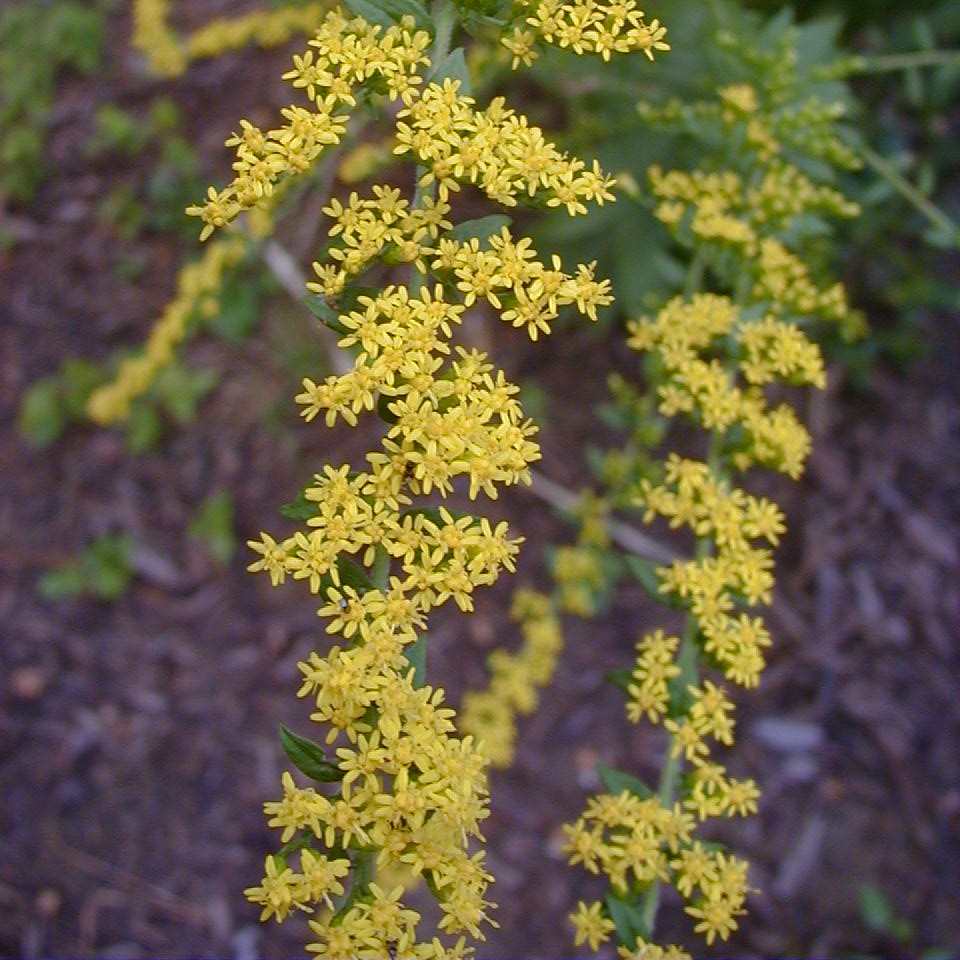
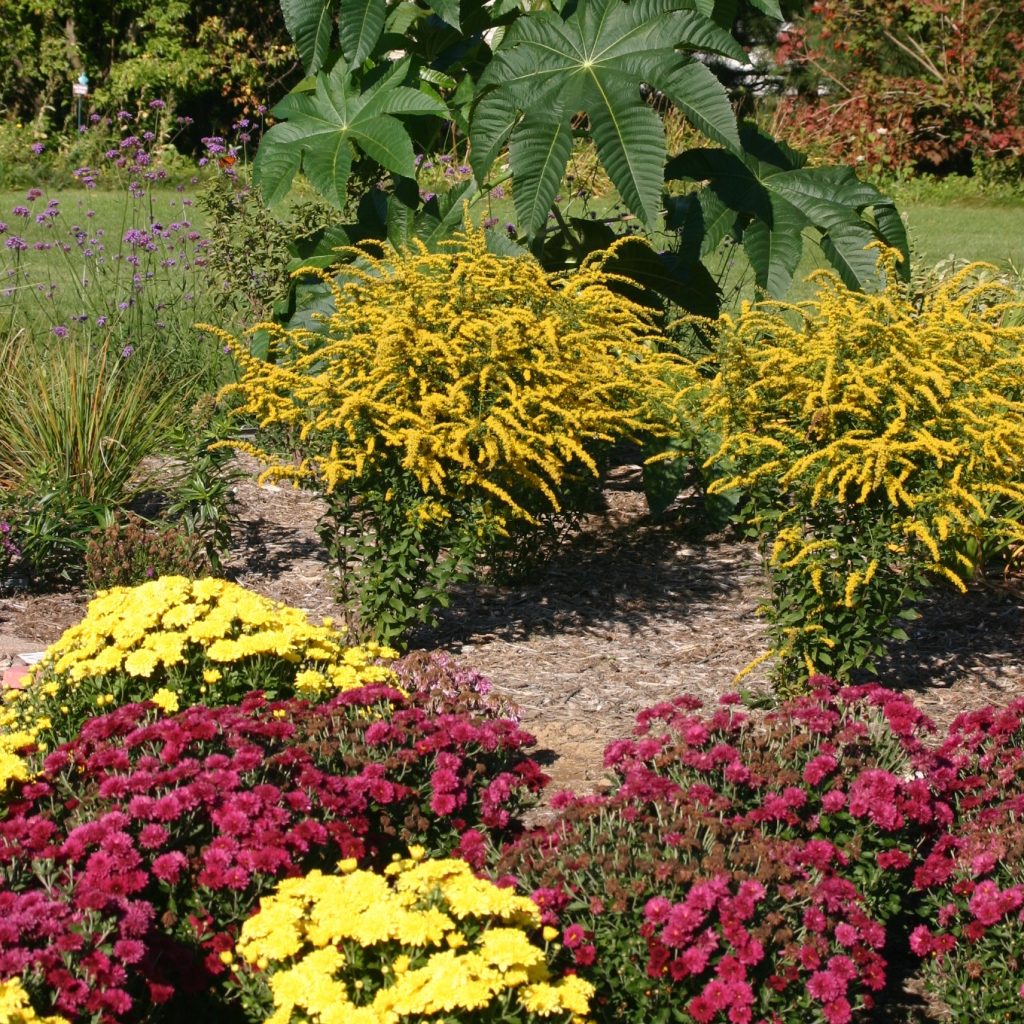
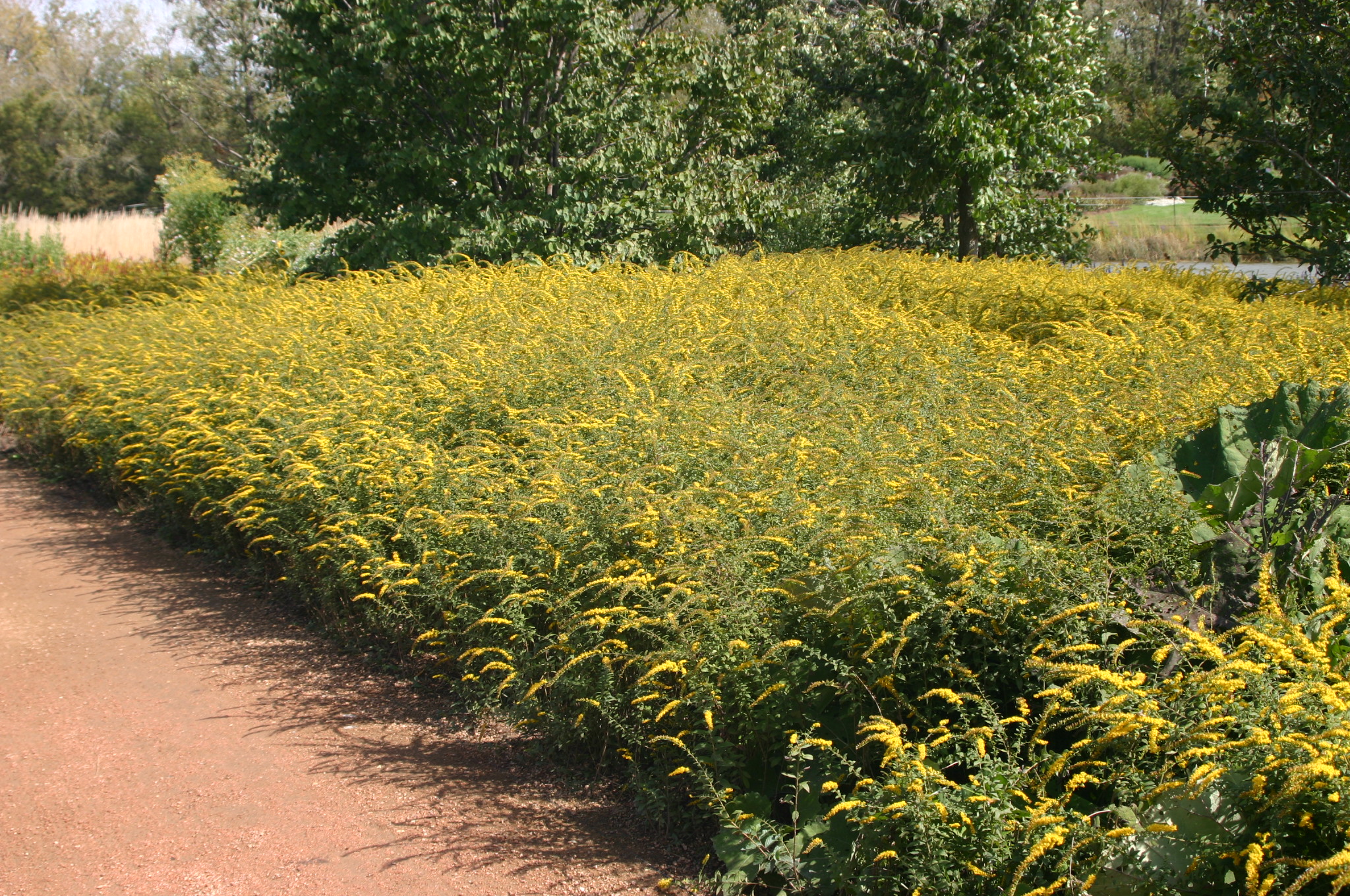

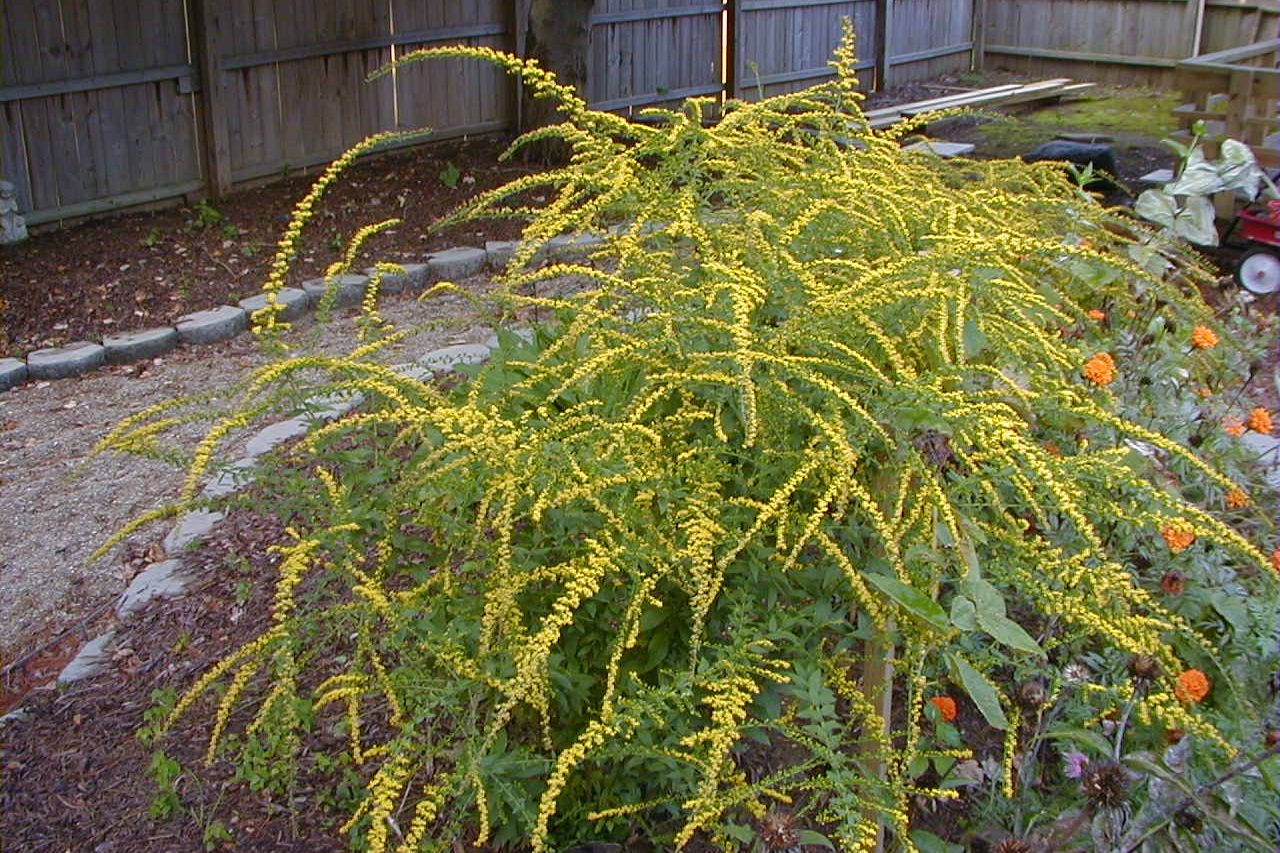
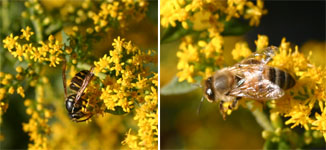
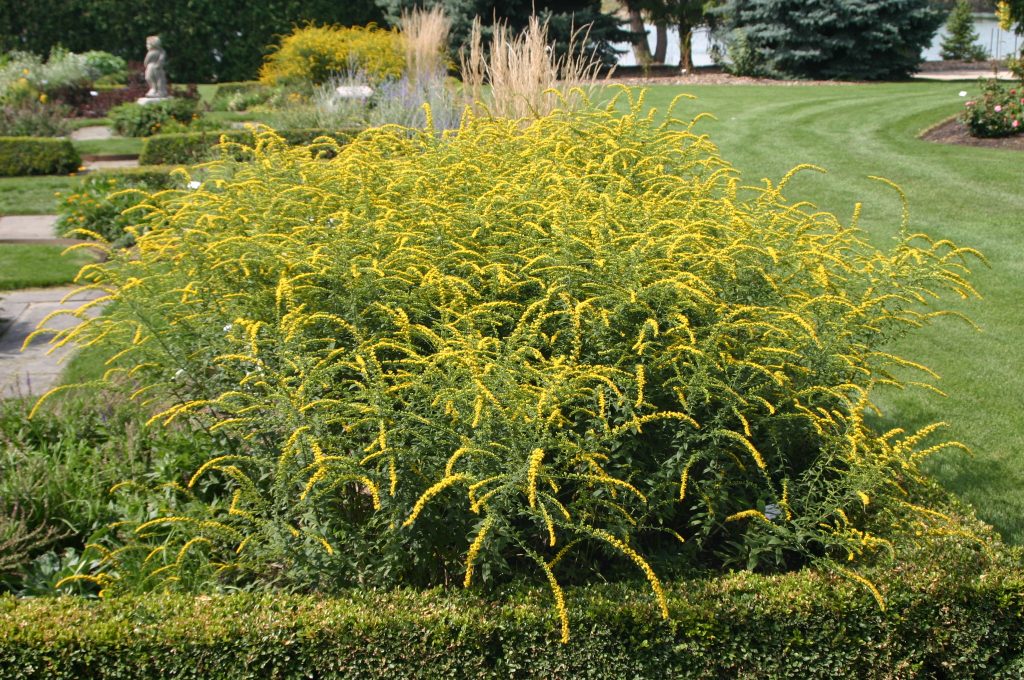




 Aster, Symphyotrichum spp.
Aster, Symphyotrichum spp. Fascinating Fasciation
Fascinating Fasciation Alternatives to Lawn: Groundcovers
Alternatives to Lawn: Groundcovers Marigolds
Marigolds


